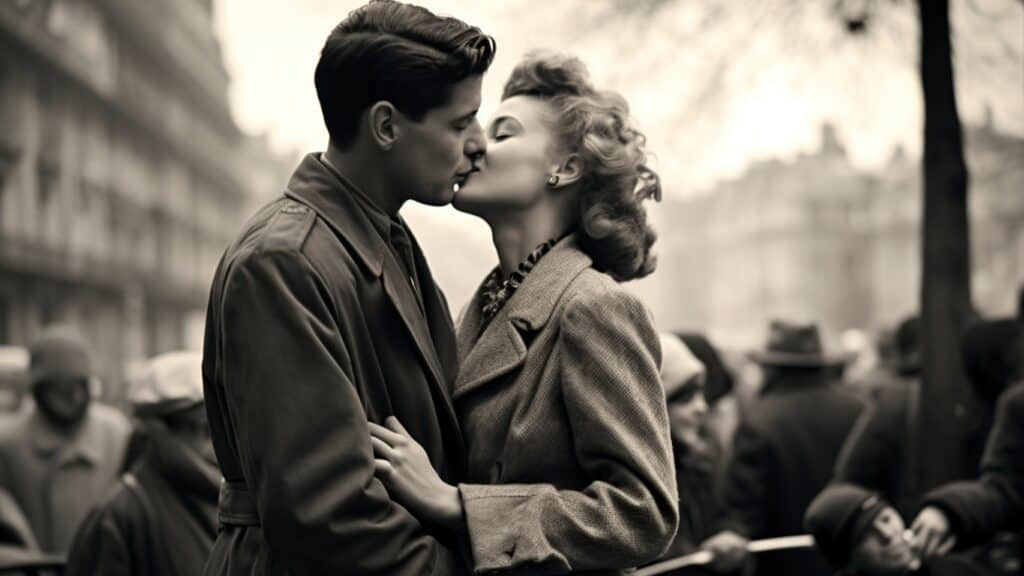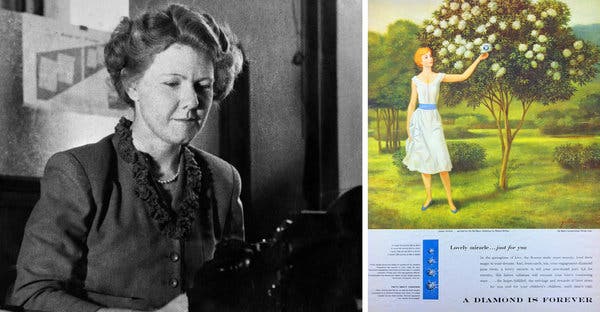The 1950s in America witnessed a transformative period marked by economic prosperity, evolving social norms, and the rise of consumer culture. Amidst this backdrop, diamond rings emerged as potent symbols, reflecting and shaping the cultural landscape of the time. Let’s dive into the multifaceted significance of diamond rings during this iconic era.

The Rise of Diamond Rings in Popular Culture
In the glamorous world of Hollywood, celebrities became trendsetters, and diamond rings adorned the fingers of leading ladies, captivating audiences with their allure and sophistication. Icons like Marilyn Monroe and Audrey Hepburn not only epitomized elegance but also popularized diamond rings as essential accessories.
It is no surprise that an entire new industry was created. Lab created diamond rings were born, providing an ethical and environmentally friendly alternative to traditional mined diamonds. Cultivated in controlled lab environments, they offer the same beauty and brilliance without the environmental impact or ethical concerns. Their rising popularity reflects a broader shift towards conscientious consumption and eco-conscious choices in the jewelry market.
Advertisements and marketing campaigns further fueled the fascination with diamond rings. De Beers’ iconic slogan, “A Diamond is Forever,” became ingrained in the American psyche, reinforcing the eternal symbolism of diamond rings as tokens of everlasting love and commitment.

However, amidst the glittering allure, a darker reality lingered. The diamond industry faced scrutiny over the sourcing of its precious gems, particularly concerning conflict diamonds—stones mined in war zones and used to finance armed conflict. This dark chapter in diamond history prompted a significant shift towards ethical sourcing practices, marking the beginning of a new era characterized by conscious consumer choices and sustainability initiatives.
As we explore the cultural significance of diamond rings in 1950s America, it’s essential to acknowledge this pivotal moment in the industry’s evolution and its lasting impact on our perceptions of diamonds as symbols of love and prestige.

Diamond rings weren’t merely jewelry; they were status symbols, signifying wealth and social standing. The bigger the diamond, the greater the prestige—a notion perpetuated by society and perpetually reinforced through media and advertising.
Diamond Rings and Gender Roles
In the rigidly defined gender roles of the 1950s, diamond rings played a pivotal role. For 1950s women fashion, diamond engagement rings became coveted symbols of romantic love and marital commitment. The act of presenting a diamond ring symbolized a man’s readiness to provide and protect, aligning with traditional notions of masculinity.

However, as societal attitudes evolved, so did perceptions of gender and jewelry. Women began to embrace diamond rings not just as symbols of dependence but also as expressions of personal style and empowerment.
Women also started to incorporate diamond rings into their attire, pairing them with elegant dresses and gowns to make a fashion statement that reflected their individuality and sense of empowerment.
Diamond Rings and Marriage Culture
Against the backdrop of post-war prosperity, marriage assumed an idealized status in 1950s America pursing the classic American dream and family life. Diamond rings became indispensable components of the matrimonial narrative, embodying the romantic ideals of love, fidelity, and companionship.
The economic boom of the era facilitated widespread access to diamond rings, as more couples could afford to invest in symbols of their enduring union. The diamond industry capitalized on this newfound prosperity, promoting diamond rings as essential elements of the modern American dream.
As couples embarked on their journey towards marriage, the availability of wedding websites would have been a modern-day convenience. These platforms offered a streamlined way for couples to plan and share details with guests, blending tradition with contemporary ease.
Diamond Rings as Family Heirlooms
Beyond their monetary value, diamond rings held profound sentimental significance as family heirlooms. Passed down through generations, these rings became repositories of cherished memories and familial legacies.

Each family heirloom diamond ring carried with it a unique narrative, weaving together stories of love, triumph, and perseverance. Whether worn on special occasions or displayed as treasured keepsakes, these rings served as tangible links to the past, connecting generations in a shared heritage of love and devotion.
Critiques and Challenges to Diamond Ring Culture
However, amidst the glamour and allure, diamond ring culture faced its share of critiques and challenges. Critics denounced the materialism and consumerism underlying the obsession with diamond rings, questioning their true significance in the grand scheme of human relationships.
Moreover, growing awareness of diamond mining practices raised ethical concerns, prompting calls for greater transparency and accountability within the industry. Countercultural movements of the 1960s influenced by celebrities and iconic figures questioned the validity of traditional symbols like diamond rings, advocating for alternative expressions of love and commitment.

In conclusion, the cultural significance of diamond rings in 1950s America extends far beyond their sparkling façade. They encapsulate the hopes, dreams, and values of a bygone era, while also serving as mirrors reflecting the evolving dynamics of society. Though the landscape may have changed, the legacy of diamond rings endures, continuing to shape our perceptions of love, marriage, and personal adornment in the modern age.
